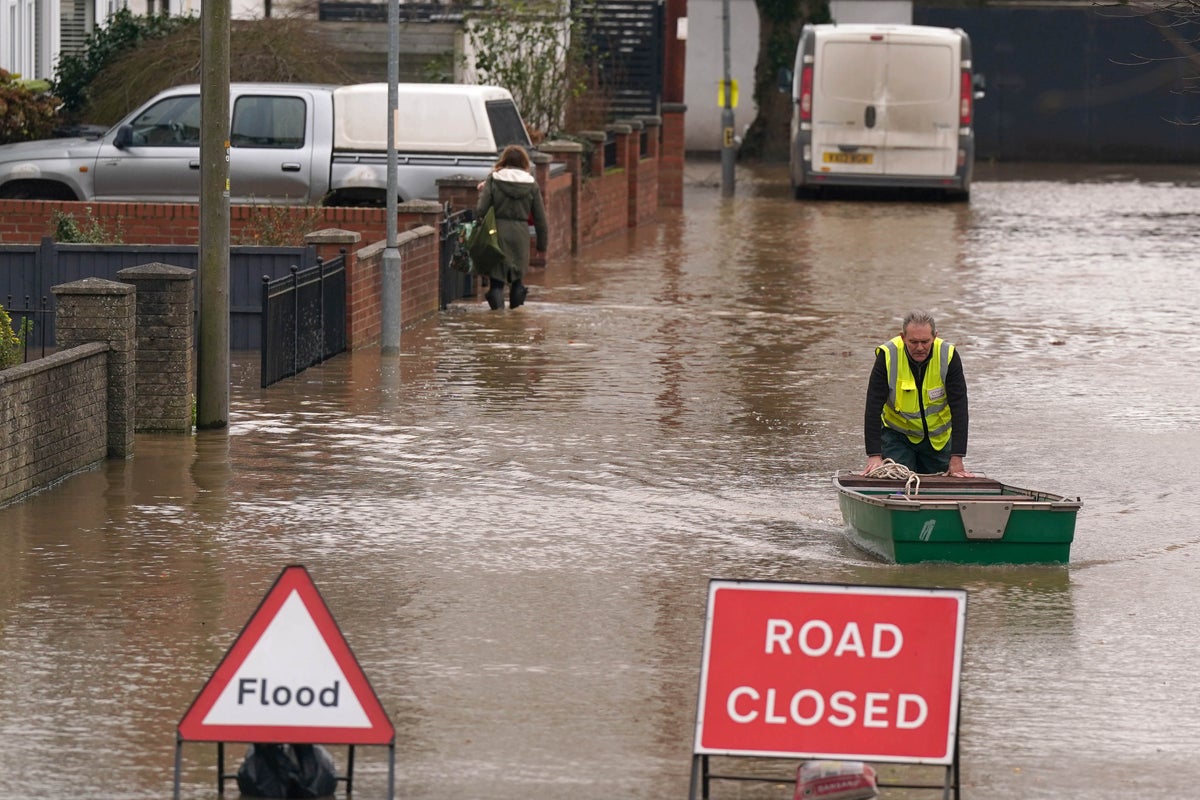Home insurance customers could face rejected claims due to obscure definitions of severe weather events, according to consumer champion Which?. An investigation by the group has revealed potential loopholes in numerous policies that could leave homeowners vulnerable. Which? analysed 133 home insurance policies from 67 different providers, uncovering discrepancies in how "storms" and "floods" are defined.
Nearly a third of policies (32 per cent) contained potentially unfair flood definitions, while a fifth (20 per cent) had questionable storm definitions, the group said. Which? highlighted several examples of these potentially unfair definitions. For floods, some policies exclude claims for "gradual" or "slow and steady" water entry, insisting on "sudden" or "rapid" ingress.

Others may reject claims if the water originates from non-natural sources, such as burst water mains. Similarly, some storm definitions mandate the presence of a single weather element, like high winds, potentially excluding damage caused by rain, hail, or snow alone. These restrictive definitions raise concerns that valid claims could be unfairly dismissed based on technicalities, according to Which? It is urging consumers to carefully scrutinise their policies and question providers about specific scenarios to ensure adequate coverage.
It looked at expert, industry, regulatory and ombudsman guidance on defining floods and storms to establish potentially unfair definitions. Which? said more than half (56 per cent) of home insurance policies reviewed did not have a definition for a flood and a third (32 per cent) did not define a storm, potentially leaving customers without clarity on what they should expect. It said that examples of claims previously reviewed by the Financial Ombudsman Service (FOS) showed some insurers had rejected claims because they claimed winds speeds were not high enough for a storm to have occurred.
There were also cases where claims have been rejected when flood damage was deemed to have happened too slowly, Which? said. Which? also carried out a survey of 1,325 people across the UK with buildings insurance, which found more than two-thirds (69 per cent) defined a flood as an event where water enters and builds up in a home regardless of speed, while three-fifths (60 per cent) defined a storm as a combination of extreme weather conditions, any of which could happen alone. The consumer group wants the Financial Conduct Authority (FCA) to investigate whether all firms’ storm and flood definitions comply with the Consumer Duty as part of its ongoing claims-handling review.
A spokesperson for the FOS said: “Storms and floods can wreak havoc on your property, and it can be overwhelming to deal with the damage caused. “During these difficult times, we expect insurers to treat consumers fairly and settle claims promptly. “If a consumer feels unhappy with the service provided by their insurer, they should firstly raise an official complaint with the firm about the issue.
“If it hasn’t been resolved to their satisfaction or they don’t feel they’ve been treated fairly, they should contact our free, independent service and we’ll see if we can help. Getting a fair answer is free and easy.” Kelly Ostler-Coyle, head of communications and stakeholder engagement at Flood Re, a scheme which helps to make the flood cover part of household insurance policies more affordable, said the scheme’s definition of ‘flood’ was agreed by the insurance industry and the government ahead of the 2014 Water Act.
“Flood Re is a reinsurer which means we reimburse insurance providers the cost of an eligible flood claim once they have already settled it with their customer.” The FCA is reviewing insurers’ claims handling arrangements and whether systems, controls, governance and oversight structures drive good consumer outcomes. It is aiming to publish the findings in the second quarter of 2025 and this will include looking at insurers’ responses to storm damage claims as part of its overall considerations.
Under the Consumer Duty, firms must make sure customers understand the products and services they are buying, including ensuring that communications meet customers’ needs and are likely to be understood by customers. An FCA spokesperson said: “Insurers should handle claims quickly and fairly and make sure customers understand what their cover includes, but it is vital people check for any exclusions before arranging protection.” A spokesperson for the Association of British Insurers (ABI) said: “Our description of what constitutes a storm provides a helpful guide for insurers to work with, for example by outlining the windspeed which could cause damage to a well-maintained property.
“It’s based on the Beaufort wind force scale, but it’s not binding, and each insurer will approach claims differently and may use their own classification. “Generally, flooding is described as substantial and unexpected water damage from an external source, impacting property at a ground level. While most buildings insurance covers flooding, water damage caused by a gradual rise in the water table, or rising damp, may not be included as this type of damage is usually predictable.
” The industry paid out a record £585 million for weather-related damages to homes and possessions in 2024, the spokesperson said..
Business

The insurance fine print that could see homeowners’ claims rejected

A Which? investigation has revealed potential loopholes in numerous policies















